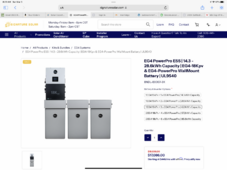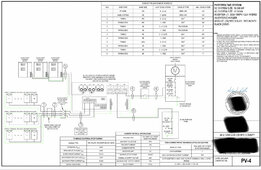Tozlakes
New Member
New to forum and solar but looking forward to learning and sharing in the future on a subject I am a bit green on.
My background is I just retired after 30 years of working overseas for ExxonMobil with a history of Mechanical/Electrical and Instrumentation on everything from GE and Solar dual fuel turbines to electrical distribution lines to large reciprocating compressors, pumps etc. Unfortunately no Solar background in all of those years but am excited to cram some knowledge about it into this overwhelmed brain.
In the process of installing 30 REC 360w solar panels in central California (Radiance value of 5.5)
My issue is ensuring the correct sizing of both the optimizers and the inverter for this grid tie in, non battery backup system. I have had some discussions and received quotes from a couple U.S. suppliers of SolarEdge inverters and optimizers but each came in with different suggestions along with crazy high quotes! The worst part is not being able to understand the conversation due to heavy accents causing even more frustration on my end hence the reason for me reaching out to the experts on this forum.
At this point I am looking for confirmation and feedback in compatibility of Inverter and optimizers below that I have been looking at.
SE7600H-US or SE10000H-US inverter? Must meet California Electric Rule 21 which I believe they all do now? (Spec sheet attached)
A quantity of 15 P860W, P960W or? SolarEdge Optimizers but would like some input on which for this system.
In “Series” or “Parallel” configuration or a combination of both.
Would also like the option to expand the system in the future in the case that demand for power becomes more than I anticipated.
My 30 installed panels are REC 360W (see attached spec sheet)
I believe that below calcs are correct but input if not would be appreciated.
30 panels X 360W = 10.8kw total system
33.9v = 1,017v in series
10.62a = 10.62a in series
33.9v = 33.9v in parallel
10.62a = 318a in parallel
Maybe a combination of both parallel and series as to match up with inverter?
I did receive a recommendation and quote from a company out of Florida that came back with SolarEdge P800 2X long optimizers (2X long is cable length?) and SolarEdge SE 7600N-USMNBBL ( not sure of the USMNBBL as it is not on my data sheet) but not sure if this will fit my need currently let alone for something along the lines of a 25% future expansion.
Currently going through the permit process but need to provide these components to both San Luis Obispo County building department and PG&E for approval.
In the future I am sure I will have many other questions on fuses, breakers, grid tie in, monitoring, wire sizing, expansion etc so please bare with me.
I know this is a lot of info and questions and will take time to go through but any help in confirming and ensuring a properly sized and designed system would be appreciated. If I missed any info needed please let me know and I will try and update this post.
Thanks in advance or the help. Tozlakes
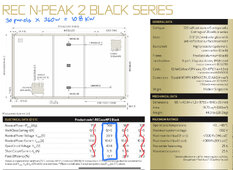
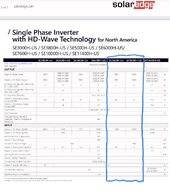
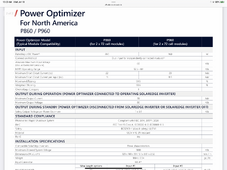
My background is I just retired after 30 years of working overseas for ExxonMobil with a history of Mechanical/Electrical and Instrumentation on everything from GE and Solar dual fuel turbines to electrical distribution lines to large reciprocating compressors, pumps etc. Unfortunately no Solar background in all of those years but am excited to cram some knowledge about it into this overwhelmed brain.
In the process of installing 30 REC 360w solar panels in central California (Radiance value of 5.5)
My issue is ensuring the correct sizing of both the optimizers and the inverter for this grid tie in, non battery backup system. I have had some discussions and received quotes from a couple U.S. suppliers of SolarEdge inverters and optimizers but each came in with different suggestions along with crazy high quotes! The worst part is not being able to understand the conversation due to heavy accents causing even more frustration on my end hence the reason for me reaching out to the experts on this forum.
At this point I am looking for confirmation and feedback in compatibility of Inverter and optimizers below that I have been looking at.
SE7600H-US or SE10000H-US inverter? Must meet California Electric Rule 21 which I believe they all do now? (Spec sheet attached)
A quantity of 15 P860W, P960W or? SolarEdge Optimizers but would like some input on which for this system.
In “Series” or “Parallel” configuration or a combination of both.
Would also like the option to expand the system in the future in the case that demand for power becomes more than I anticipated.
My 30 installed panels are REC 360W (see attached spec sheet)
I believe that below calcs are correct but input if not would be appreciated.
30 panels X 360W = 10.8kw total system
33.9v = 1,017v in series
10.62a = 10.62a in series
33.9v = 33.9v in parallel
10.62a = 318a in parallel
Maybe a combination of both parallel and series as to match up with inverter?
I did receive a recommendation and quote from a company out of Florida that came back with SolarEdge P800 2X long optimizers (2X long is cable length?) and SolarEdge SE 7600N-USMNBBL ( not sure of the USMNBBL as it is not on my data sheet) but not sure if this will fit my need currently let alone for something along the lines of a 25% future expansion.
Currently going through the permit process but need to provide these components to both San Luis Obispo County building department and PG&E for approval.
In the future I am sure I will have many other questions on fuses, breakers, grid tie in, monitoring, wire sizing, expansion etc so please bare with me.
I know this is a lot of info and questions and will take time to go through but any help in confirming and ensuring a properly sized and designed system would be appreciated. If I missed any info needed please let me know and I will try and update this post.
Thanks in advance or the help. Tozlakes



Last edited:



